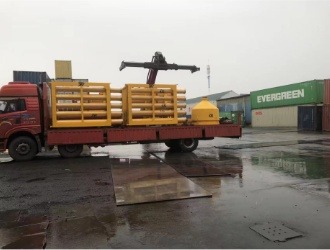Introduction
Pile foundation construction is critical for high-rise buildings and infrastructure projects. Proper planning, execution, and quality control ensure structural integrity and cost efficiency. This guide covers 21 essential aspects of pile foundation construction, from pre-construction preparation to safety management.
1. Pre-Construction Preparation
- Geotechnical Surveys: Conduct soil investigations (e.g., borehole tests) before finalizing pile designs. Provide reports early to guide pile length estimation.
- Procurement: Engage survey and drilling contractors in advance to avoid delays.
2. Optimizing Borehole Drilling Efficiency
- Site Assessment: Check for waterlogging, slopes, or swamps. Coordinate with the main contractor for site preparation if not specified in the contracts.
- Workflow: Drill cores in batches and submit test results progressively to designers. Prompt communication helps address additional drilling needs.
3. Pile Design Review Checklist
- Pile Length & Rock Embedment: Compare with geotechnical data; discuss discrepancies with designers.
- Reinforcement: Check for overly dense main bars, double-layer cages (require special installation), or undersized stirrups (risk of deformation).
4. Piling Equipment Selection
- Rotary Drilling Rigs: Brands like Sany, XCMG, Zoomlion (China), or Bauer (Germany). Key models:
- 220/280: For soil (50m max depth).
- 360/400/460: For rock (e.g., XCMG 360 = 36 t·m torque; 400 rig drills 1m of medium-hard rock in ~2 hours).
- Drill Bits:
- Tooth Bits: For soil (replaceable teeth; ~4–5 hours to reach rock at 50m depth).
- Roller Bits: For hard rock (cost ~$150+/unit).
5. Contractor Management
Prefer machine-included crews to incentivize productivity. Fixed-wage operators may delay progress without supervision.
6. Soil Excavation Responsibility
- Pile Contractors: Better for efficiency, but may conflict with earthwork teams.
- Earthwork Contractors: Simplifies management but requires coordination for muddy soil drying.
Recommendation: Assign all earthwork to one party to reduce disputes.
7. Pile Testing Protocol
- Timing: Engage testing firms within 15 days of design finalization.
- Cost-Saving Tips: Optimize sampling ratios, tonnage selection, and testing methods with designers and regulators.
- Execution: Ensure proper installation of sonic tubes and excess concrete for integrity tests.
8. Site Layout Principles
- Allocate zones for drilling, material storage (e.g., slurry tanks, rebar yards), and access routes.
- Account for rig positioning, crane space, and concrete pump trucks.
9. Equipment Movement Planning
- Drill from inner areas outward, maintaining >4m spacing between active piles.
- Prioritize high-load piles (e.g., tower foundations) and exit-path piles early.
10. Ground Improvement
- Use crushed bricks for soft ground. Clarify cost responsibilities with the main contractor.
11. Quality Control Measures
- Surveying: Verify pile locations twice.
- Drilling: Maintain verticality; use slurry separators (sand content <8%).
- Rock Sampling: Retain cores for validation against surveys.
- Cleaning: Ensure borehole sediment ≤4cm before cage insertion.
- Rebar Cages: Welding standards (10d single/5d double lap); spiral stirrups @200mm spacing.
- Concrete: Continuous pouring with tremie pipes; overpour to design height.
- Backfilling: Fill voids after curing for safety.
12. Documentation & Measurement
- Record drilling metrics (depth, diameter), concrete volumes (theoretical vs. actual), and retain photos.
- Monitor bulk factor (typically 1.2; negotiate if higher).
13. Material Logistics
- Slurry Supply: Rotary rigs consume 1.5x theoretical slurry volume (30–50% recyclable).
- Concrete: Secure multiple suppliers to avoid delays.
14. Common Challenges
- Complex Geology: Address rock layer inconsistencies or slopes early.
- Equipment Jams: Pre-treat inclined rock surfaces.
15. Safety Practices
- Inspect machinery; train certified workers.
- Secure slurry pits, cables, and fuel tanks.
16–21. Post-Grouting Details
- Pipes: Use Φ50 steel tubes (compatible with sonic testing).
- Timing: Grout 2–30 days post-pouring (ideal: 7–15 days).
- Grout Mix: 0.45–0.65 water-cement ratio for saturated soil.
- Sequence: Start from the center or the periphery based on ground conditions.
Conclusion
Effective pile foundation construction hinges on meticulous planning, equipment selection, and real-time coordination. Implement these best practices to enhance quality, safety, and cost efficiency.


